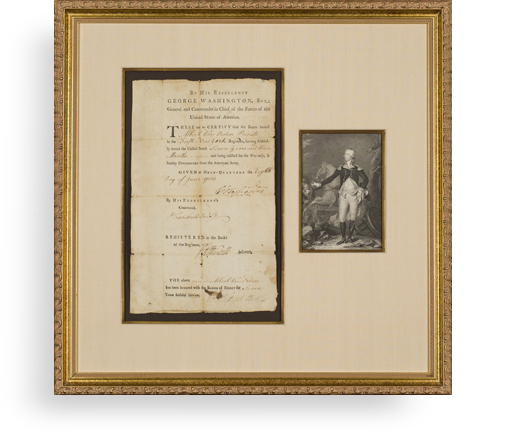Sold – During his Farewell Voyage to Europe, Ralph Waldo Emerson Writes a Companion on his Boat

One month later, he would see Carlyle for the last time.
If Henry David Thoreau was the heart of the Transcendentalist movement, Ralph Waldo Emerson was its mind. A Unitarian minister, Emerson rebelled against the institutional thinking of the establishment, authoring essays that embraced nature, independent thought, and God. He spent a lifetime developing and encouraging others to develop a purely American body...
If Henry David Thoreau was the heart of the Transcendentalist movement, Ralph Waldo Emerson was its mind. A Unitarian minister, Emerson rebelled against the institutional thinking of the establishment, authoring essays that embraced nature, independent thought, and God. He spent a lifetime developing and encouraging others to develop a purely American body of literature, recognizing the talent of a young Thoreau and Whitman, of whose work he wrote, “I rubbed my eyes a little, to see if this sunbeam were no illusion.”
In 1872, Emerson’s house burned to the ground. His neighbors and friends paid for him to travel to Europe and surprised him by rebuilding his house in his absence. With his daughter, Emerson went to England, mainland Europe and Egypt. He visited his friend Thomas Carlyle for the last time. About this trip, Charles Eliot Norton, who traveled with Emerson toward the end, wrote, “Emerson was the greatest talker in the ship’s company.”
In December 1873, Emerson went to Egypt and set sail again for Italy on February 19. By February 24, he was off the shore of Italy, and penned this note to a Mrs. Beaver, who apparently had engaged Emerson during this trip.
Autograph Note Signed, “At sea off Mount Etna,” February 24, 1873, to “Mrs. Beaver.” “With very agreeable recollections of these days at sea in company with herself and her family. R. Waldo Emerson.”

Frame, Display, Preserve
Each frame is custom constructed, using only proper museum archival materials. This includes:The finest frames, tailored to match the document you have chosen. These can period style, antiqued, gilded, wood, etc. Fabric mats, including silk and satin, as well as museum mat board with hand painted bevels. Attachment of the document to the matting to ensure its protection. This "hinging" is done according to archival standards. Protective "glass," or Tru Vue Optium Acrylic glazing, which is shatter resistant, 99% UV protective, and anti-reflective. You benefit from our decades of experience in designing and creating beautiful, compelling, and protective framed historical documents.
Learn more about our Framing Services







































































































